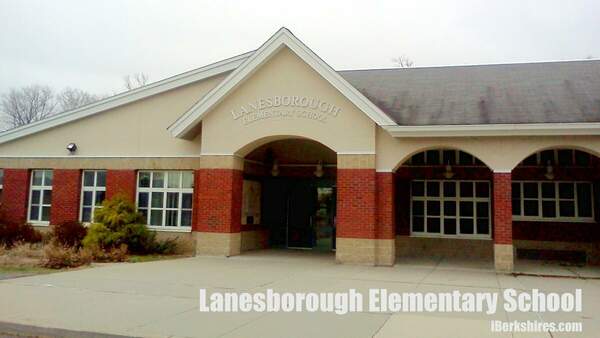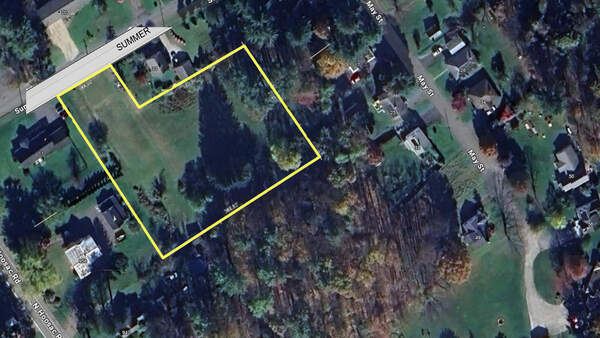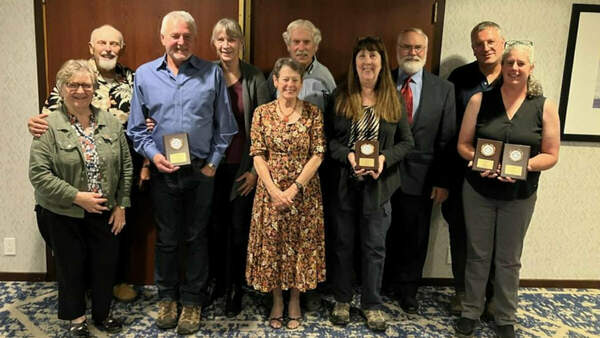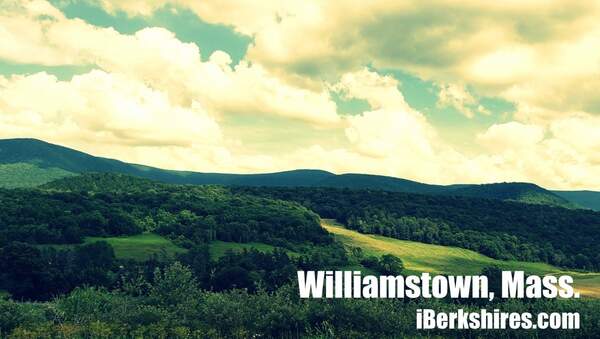Williamstown Voters Face Questions on Land
|
A pile of contaminated soil being removed from the former town garage site is evidence the town is moving forward on developing other town-owned lands, in addition to the so-called Lowry property. |
WILLIAMSTOWN, Mass. — Good humor has frequently been lacking from a five-month town discussion about conserved land and affordable housing.
But the final remark at a recent panel discussion did elicit a few chuckles.
"There are two special town meetings coming up," moderator Adam Filson reminded a packed house. "Town Clerk Mary Kennedy advises that you arrive at least 30 minutes early.
"Check in is in the wrestling room."
A better location could not have been chosen to start an evening during which town votes will continue to wrestle with a highly contentious issue.
Once the voters are checked in, they will enter the Mount Greylock Regional High School gymnasium for not one, but two meetings that will get under way at 7:25.
When those meetings end, the town may have some resolution to the question of what, if anything, can be done with a town-owned parcel off Stratton Road that town officials have identified as a potential location for replacement housing for residents of the storm-damaged Spruces Mobile Home Park and, long-term, low- and moderate-income residents for years to come.
The so-called Lowry property is the focus of two special town meeting warrant articles, one of which also is repeated on the May 21 annual town meeting warrant by virtue of a citizens' petition.
Participants should note that the first meeting does not have to be completed in five minutes; the second meeting will follow immediately after the first is concluded.
The Arguments
Advocates for affordable housing argue that Lowry is one of several town-owned sites that should be studied and kept on the table as possible sites for subsidized housing. Other sites actively being pursued by the town's Affordable Housing Committee are the former PhoTech property on Cole Avenue and the former town garage site on Water Street.
The main advantage of Lowry over those other sites is that is the only one with the potential to accommodate a community approximating the kind of single-family homes residents enjoyed at the Spruces.
The town garage site is best-suited for dense development with apartments or town homes. The PhoTech site is larger, but much of it is in a flood plain, and all of the land is contaminated to the point where state law would not allow single-family residences (on the principle that single-family homes mean gardens, and nothing that grows in the soil there should be consumed).
The Lowry site is 30 acres (though only 10 are proposed for use as affordable housing) and has clean soil. And unlike much of the open space in town, Lowry is close to town water and sewer, which also makes it attractive for development.
Opponents of development argue that all that clean soil is a town resource that should not be disturbed.
Almost from the moment Town Manager Peter Fohlin announced the town's intention to use some of the proceeds from a federal Hazard Mitigation Grant to develop Lowry, conservation advocates have decried the plan.
Some of the loudest objectors are residents on Stratton Road and nearby Longview Terrace. But opponents of development also include advocates of agriculture. The Lowry land currently is worked by a local farmer who uses hay from the field to keep his operation profitable, and people who are concerned about keeping farms viable in the Berkshires have joined the calls to keep Lowry undeveloped.
The Articles
7:25 p.m., first meeting, Article 1
The only article on the warrant for the first special town meeting on Wednesday asks whether the town will accept a provision of Massachusetts General Law that allows towns to transfer land for the purpose of affordable housing by a simple majority, instead of the two-thirds "super majority" such a vote would need without passage of the provision.
Originally, this article was proposed for the warrant of the 7:30 meeting, but the Board of Selectmen, on a 2-2 vote, failed to put it on that warrant. At a subsequent board meeting, the panel voted, 4-1, to call a separate special town meeting to resolve this question in advance of the 7:30 meeting.
7:30, second meeting, Article 1
If there is any vote that might take place with little to no discussion, it is this vote to approve a conservation restriction on a 39-acre parcel of privately owned land off Oblong Road.
Usually, such restrictions are approved by select boards. But earlier this year, Selectwoman Jane Allen argued against approval by the Williamstown Selectmen because she said there was so much debate over the broader issue of conserved land that it would be beneficial to have town meeting take up the subject.
She made that argument before the petition seeking a special town meeting on Lowry was filed.
In a 1-1-1 vote, the Selectmen failed to take any action on a request by the landowners to approve the restriction on the property, known as the Carmelite Fields, leaving the question to be resolved by town meeting.
In a recent advisory vote, Allen joined a 4-0 decision by the Selectmen to advise that voters to approve the restriction.
Update, April 23, 2013: The land's owner, Dr. Eric White, will withdraw his application for a conservation restriction because of an issue that will require rewriting the application. He informed the Selectmen on April 22.
7:30, second meeting, Article 2
The Board of Selectmen drafted this article to transfer about one-third of the Lowry property from control of the town's Conservation Commission to the Selectmen for the purpose of developing affordable housing.
By the time the town faces this question, it will know whether it needs to pass by a simple majority or a two-thirds vote, depending on the result of the 7:25 special town meeting.
This same article appears, verbatim, on the warrant for the May 21 annual town meeting as the product of a citizen's petition.
7:30 second meeting, Article 3
This is the article, created by citizen's petition, that spurred the special town meeting in the first place. It would place all 30 acres of the Lowry property plus the larger, 139-acre town-owned Burbank property into conservation "in perpetuity."
NOTE: The town's Conservation Commission maintains that neither Article 2 nor Article 3 is binding on that body, which currently is charged with caring for both Burbank and Lowry.
The Attorneys
Hanging over the entire process Wednesday night will be the question of whether the town can move Lowry out of conservation even if the majority of residents say it should.
Opponents of development contend that the land in question is subject to Article 97 of the Massachusetts Constitution, which allows land to be taken out of conservation by a process people on both sides of the debate describe as draconian.
The town maintains that Lowry is not Article 97 land, and it has an opinion by town counsel to support that position. In a nutshell, the town's argument is that since the land was not acquired for the purpose of conservation it does not fall under the conservation statute. It was purchased by the town for construction of a high school that never was built and transferred to the Conservation Commission more than 20 years later.
A March 25 letter to the Board of Selectmen from attorney Joel Bard with the Boston firm of Kopelman & Paige emphasizes language in Article 97 referring to "lands and easements taken or acquired for such purposes" and cites a recent Supreme Judicial Court opinion (Mahajan v. DEP) as supporting his interpretation of the article.
But residents of the Stratton Hills Condominium Association, whose property abuts the Lowry property, have a legal opinion of their own, drafted by F. Sydney Smithers of the Pittsfield firm Cain Hibbard & Myers, which contradicts that of town counsel. "Despite the original purpose, the fact is that the parcel was placed in the care, custody and management and control of the Conservation Commission" and, therefore, is protected by Article 97, Smithers reasons.
The Conservation Commission itself, which plans to vote on advisory positions at its April 23 meeting (24 hours before the meetings), is pressing state officials, including the attorney general's office, for an opinion on whether Article 97 applies to the Lowry parcel.
Tags: affordable housing, conserved land, lowry property, special town meeting,
















